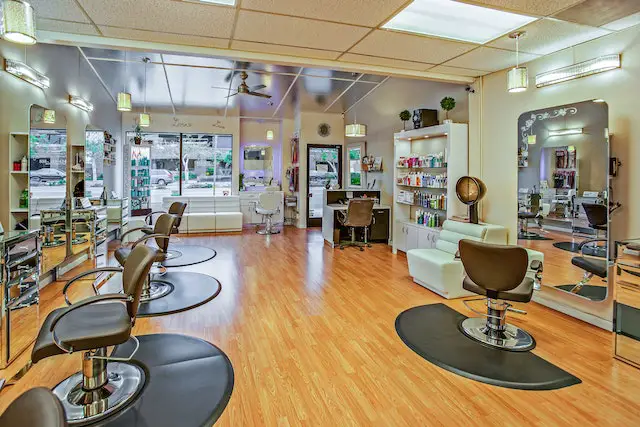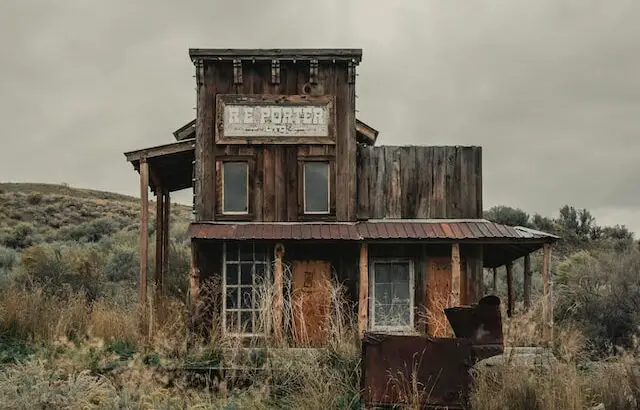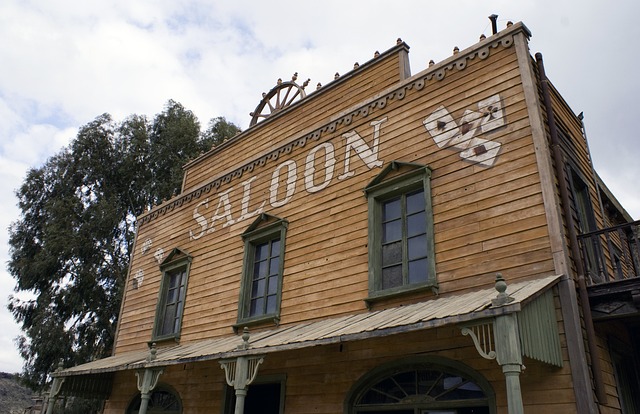A saloon is typically a bar or tavern that serves alcoholic beverages, often in a historic or western-themed setting. On the other hand, a salon is a place where individuals can receive personal grooming services, such as haircuts, styling, facials, and more. Salons may also offer additional beauty treatments and services. While there is some overlap in services, saloons are primarily focused on alcohol, while salons are focused on beauty and personal care.
What is a Saloon
(Photo by Delbeautybox on Pexles.com)

When most people think of a saloon, the first thing that comes to mind is probably a place where you can drink alcohol. However, a saloon can also refer to any establishment that provides social and recreational activities for its customers. These establishments can be found in almost every town and city, and they often offer games, music, and other entertainment. Some saloons also specialize in specific types of drinks, such as cocktails or beer.
Many saloons are also used as places to meet friends or socialize. They are often the focal point of neighborhood life, and they can be a source of relaxation and entertainment after a long day at work. Saloons can also be quite controversial, as they have been associated with violence and crime over the years. However, many modern saloons operate under strict regulations designed to keep the peace.
What was a saloon in the wild west?
In the Wild West, a saloon was a bar or tavern that served alcoholic beverages, and often served as a gathering place for cowboys, miners, and other frontier folk. Saloons were a staple of western frontier towns and were known for their rowdy and sometimes dangerous atmospheres. In addition to alcohol, many saloons offered food, entertainment, gambling, and even makeshift lodging for travelers. They played a significant role in the social and cultural life of the Wild West and remain an iconic symbol of the period.
What is a Salon
(Photo by Yann Allegre on Unsplash)

A salon is a place where people can get their hair cut, styled or colored. Salons often have staff of hairstylists and colorists who can help you choose the right style for your hair, as well as provide advice on how to maintain it. Many salons also offer other services, such as facials and massages.
What is the difference between a salon and a saloon?
A salon is a place where you can receive personal grooming services, such as haircuts, styling, facials, and more. Salons are typically upscale and luxurious, offering a variety of beauty treatments and services. They are designed to provide customers with an indulgent and relaxing experience, and are often geared towards women.
On the other hand, a saloon is a bar or tavern that serves alcoholic beverages. Saloons are often historic or western-themed, and are known for their lively and sometimes rowdy atmospheres. Saloons are typically focused on alcohol and are popular among locals and travelers alike. They offer a range of beverages, including beer, wine, and spirits, and often feature live music or other forms of entertainment. Saloons are also a great place to grab a bite to eat, whether it’s a quick snack or a full meal.
What is the correct spelling salon or saloon?
There is some debate over the correct spelling of salon, with many believing that it should be spelled saloon. However, the Oxford English Dictionary (OED) gives the pronunciation as sal-on, so the preferred spelling may simply be a matter of personal preference.
Saloon typically refers to a bar or pub where alcoholic beverages are served, while salon typically refers to a small room or day spa where people can receive massages and other treatments.
What are the types of salons?
Salons can be classified based on the services they offer:
- Personal Salons: These salons primarily focus on hair, makeup, and nails.
- Acrylic Salons: These salons specialize in acrylic nails and hair extensions.
- Nail Salons: These salons offer a variety of services related to nails, including manicures and pedicures.
- Barber/Styling Salons: These salons offer haircare services, including haircuts and styling.
What is a saloon girl?
A saloon girl was a female worker in a saloon, typically during the late 19th and early 20th centuries in the American West. Saloon girls were often hired to entertain male patrons, serving drinks and performing dances. They were also known for their flirtatious and provocative behavior, which was meant to entice men to buy more drinks.
Saloon girls were a controversial and often misunderstood aspect of the Wild West. Some were viewed as “fallen women” or prostitutes, while others were seen as independent women making a living in a male-dominated world. Despite this, they played an important role in the social and cultural life of the frontier, offering a sense of excitement and adventure to travelers and residents alike.
It is important to note that the experiences and conditions of saloon girls varied greatly, and that many were subjected to exploitation, abuse, and poverty. The saloon girl is a complex and multifaceted figure in American history, reflecting the broader social, economic, and cultural forces of the time.
Do saloons still exist?
Yes, saloons still exist today. Although they are not as common as they once were, there are still many saloons in operation across the United States and other countries. Some of these saloons are historic establishments that have been in operation for decades or even centuries, and are known for their vintage charm and atmosphere. Other saloons are more modern, offering a wide range of food and drink options, live music, and other forms of entertainment.
Saloons are still a popular destination for many people, whether they are looking for a place to grab a drink, watch a game, or catch up with friends. They offer a sense of history and tradition, and are often associated with the frontier spirit and wild west culture. Saloons are also a great place to socialize and have fun, and they continue to play an important role in the social and cultural life of many communities.
What was the structure of an old wild west saloon?
The structure of an old Wild West saloon may have been simple, but the customer experience was always unique. Saloons in the Old West were typically divided into two sections: the bar and the gambling room. The bar served as a place where customers could purchase drinks and snacks, while the gambling room offered games of chance such as poker, black jack, and slot machines. While saloons were typically dark and humid, they also offered visitors a sense of adventure and excitement.
What is the purpose of a salon?
Salon is a business that provides hair and beauty services. Salons often offer more comprehensive services than traditional hair salons, including haircuts, color, highlights, relaxers, perms, and other treatments. Many salons also offer waxing and other personal care services. Some salons also sell products such as hair care products and makeup.
What are the characteristics of a salon?
A salon is typically a place where people go to receive personal care and beauty services, such as hair cuts, styling, coloring, and makeup. Some salons may also offer other services, such as skin care, nail care, and massage. The following are some of the typical characteristics of a salon:
Professional Services: Salons are staffed by trained and licensed professionals, who are knowledgeable and skilled in providing beauty and personal care services.
Atmosphere: Salons are often designed to be relaxing and comfortable, with a welcoming and friendly atmosphere. Some salons may have a spa-like feel, with soothing colors, lighting, and music, while others may be more contemporary or stylish.
Products: Salons often sell or use professional-grade beauty and personal care products, such as shampoos, conditioners, styling products, and makeup.
Equipment and Tools: Salons are equipped with the necessary tools and equipment to provide a wide range of services, such as styling chairs, blow dryers, and makeup stations.
Scheduling: Salons typically offer appointment-based services, allowing clients to schedule their visits in advance.
Privacy: Salons often offer private or semi-private areas for clients to receive their services, promoting a sense of privacy and relaxation.
Customer Service: Salons typically place a strong emphasis on customer service, with staff trained to provide professional, friendly, and personalized services.
Overall, salons are places where people go to enhance their appearance and feel their best, and they offer a range of services and amenities to meet this goal.
The history and evolution of saloons and salons
The history and evolution of saloons and salons can be traced back to different time periods and cultural traditions.
Saloons have a long history, dating back to the American Wild West of the late 19th century.
In contrast, the history of salons dates back to the 16th century in France, where they were originally established as gathering places for artists, intellectuals, and members of the noble class. Salons were venues for discussions of literature, philosophy, and art, and were often hosted by wealthy and influential women. Over time, the role of salons evolved, and they became more widely accessible to women from all classes. Salons also became important venues for political discussions and activism, and many important movements and ideas were born in these gatherings.
The evolution of saloons and salons continued over the centuries, with both establishments adapting to changing cultural norms and trends. In the late 19th and early 20th centuries, for example, saloons evolved into more sophisticated and upscale establishments, offering a wider range of food and drink options, live music, and other forms of entertainment. At the same time, salons evolved into more specialized establishments, focused on providing personal care and beauty services.
Today, both saloons and salons continue to play important roles in many communities, serving as gathering places and venues for socialization, entertainment, and personal care. Whether it’s a historic western saloon or a modern day beauty salon, these establishments remain important parts of our cultural heritage and social fabric.
The atmosphere and décor in saloons and salons
The atmosphere and décor in saloons and salons have changed significantly over the years, reflecting changing cultural norms and trends.
In the Wild West of the late 19th century, saloons were typically rough and tumble establishments, with a focus on providing cheap alcohol and gambling opportunities to men. The atmosphere was often rowdy and boisterous, with the sound of clinking glasses, clanging piano keys, and shouting voices filling the air. The decor in these saloons was typically simple, with rough wooden bar tops, spittoons, and few adornments.
In contrast, the atmosphere and décor in salons of the 16th century France were often more sophisticated, reflecting the high cultural and intellectual standards of their patrons. Salons were typically hosted in the homes of wealthy and influential women, and the décor often included plush furnishings, elegant artwork, and sophisticated lighting. The atmosphere was refined and cultured, with quiet conversation and refined laughter filling the air.
Over time, both saloons and salons have continued to evolve, with changing cultural norms and trends shaping their atmospheres and décors. Today, the atmosphere and décor in salons often reflect a focus on personal care and beauty, with calming colors, comfortable furnishings, and relaxing lighting. At the same time, many modern saloons have embraced a more sophisticated and upscale atmosphere, with a focus on fine food, drink, and entertainment.
The role of technology in saloons and salons
Technology has played a significant role in shaping the saloons and salons of today, affecting everything from the services offered to the atmosphere and décor.
In modern salons, technology has allowed for the development of new hair and beauty treatments, such as computer-controlled hair color and advanced skin care services. This technology has allowed salons to offer a wider range of services and more personalized experiences for customers.
In addition, technology has also changed the way salons are managed and operated. Today, many salons use software and apps for appointment booking, customer management, and financial reporting. This technology has made it easier for salon owners to run their businesses and provide a better experience for customers.
Similarly, technology has also impacted the saloon industry. Many modern saloons now feature high-tech gaming and entertainment systems, such as virtual reality experiences and high-definition video game consoles. In addition, technology has also allowed saloons to offer a wider range of food and drink options, including automated bar systems and ordering systems.
Overall, technology has had a profound impact on the saloons and salons of today, changing the way these establishments operate and the experiences they offer to customers. Whether it’s through new treatments or cutting-edge gaming systems, technology has helped to shape these industries in exciting and innovative ways.
What are the the products and brands used in salons?
The products and brands used in salons can vary widely depending on the type of services offered and the target market of the salon. However, some common categories of products used in salons include:
- Hair care: shampoos, conditioners, styling products, hair color, hair treatments
- Skin care: cleansers, toners, moisturizers, exfoliants, facial masks, serums
- Nail care: nail polishes, nail treatments, base coats, top coats, cuticle oils
- Makeup: foundations, powders, lipsticks, eye shadows, mascaras, blushes
- Tools and equipment: blow dryers, flat irons, curling wands, brushes, combs, scissors, trimmers
Some of the most popular and widely used brands in salons include:
- Hair care: Redken, Paul Mitchell, Wella, Matrix
- Skin care: Dermalogica, Obagi, Murad, Estée Lauder
- Nail care: OPI, Essie, Zoya, Butter London
- Makeup: MAC, Nars, Urban Decay, L’Oréal
- Tools and equipment: Babyliss, Conair, Dyson, Hot Tools
It’s important to note that salons may choose to use a variety of different brands and products to cater to the specific needs and preferences of their customers. Ultimately, the products and brands used in salons will depend on the type of services offered, the target market, and the individual preferences of the salon.
Featured Image By – Image by Paul C Lee from Pixabay








